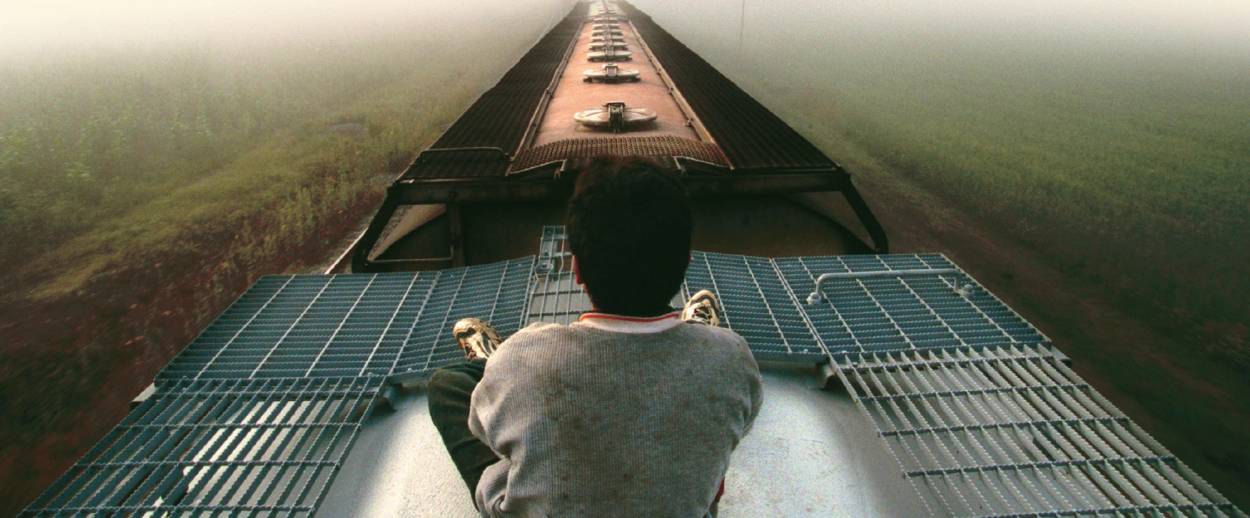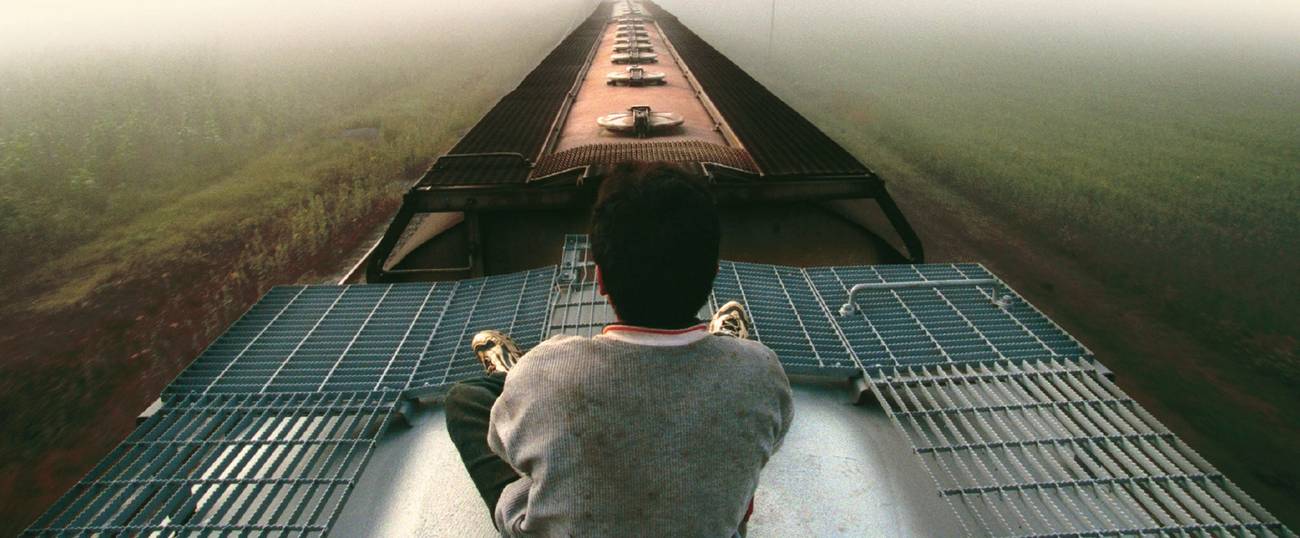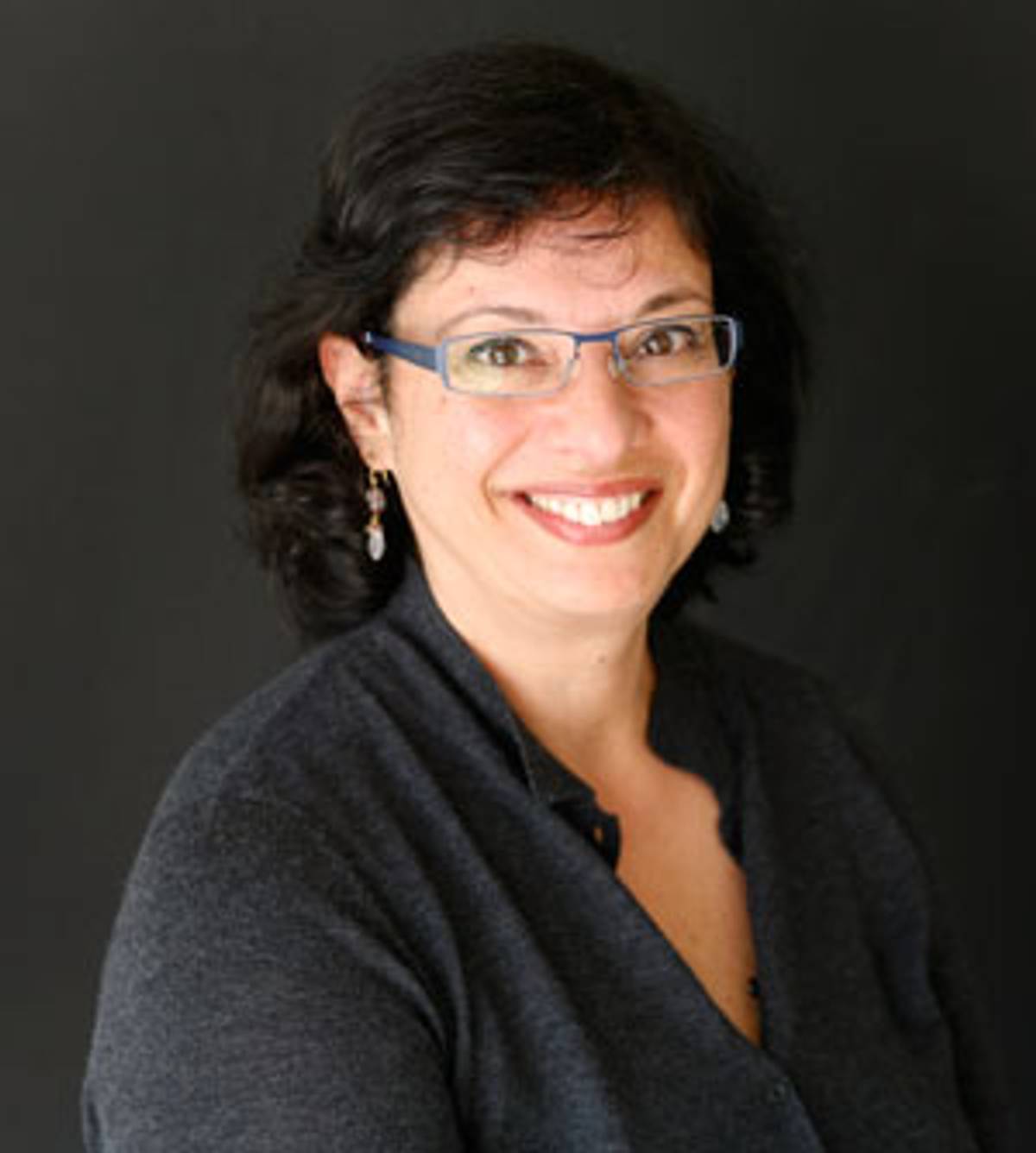Some might call Sonia Nazario a heroine. Others might call her a troublemaker. Some might not like her position on immigration. Others might not like her outspokenness about the inherent problems of immigrants leaving children behind. By any measure, however, Nazario may be one of the most important Jewish social activists that you have never heard of.
In 2015 alone she has received awards from the First Focus Campaign for Children and the Golden Door Award from HIAS Pennsylvania. She has also testified before Congress and the United Nations and is routinely speaking at college campuses around the nation. This week she was awarded an “honorary visiting professorship” at the Universidad Autónoma de Hidalgo in Mexico, from where she’ll also be reporting for the New York Times on migrant deaths in the country.
Nazario is a woman of coraje or chutzpah. She rode on top of rickety Mexican freight trains, better known as the trenes de la muerte or la bestia (trains of death; the beast), from Chiapas, Mexico, to the U.S. border to report on unaccompanied minors. With her on this journey were hundreds of immigrants, children, women, men, and gang members.
The travelers are mostly strangers to one another, some as young as 5 years of age, only able to protect themselves on this perilous journey. Yet sometimes bonds are formed and a new kind of family emerges, one that hopes to protect each other from the danger of gang members, cartel members, robbers, and rapists.
Many are fleeing unimaginable violence in Central America and Mexico in large part due to drug trafficking and gang warfare; by some measures Honduras now has the highest murder rate in the world, El Salvador the second, and Guatemala the fifth. Many are looking for better economic opportunities. And many, many more, especially the children, are following an implacable urge to find their mothers.
It took Nazario three months, seven freight trains, and one hitchhike with a driver of an eighteen-wheeler semi to travel from what she calls Mexico’s “heart of darkness,” Chiapas, to the U.S. border. Along the way she almost got knocked off the train by a tree branch, experienced extreme cold and heat, fear, and hunger. Why did she do this? Because she had heard from Carmen, who cleaned her house in Los Angeles, that her son, like many, was making the journey by himself to reach her. And that many more were doing the same thing. She set out to find out why. But nothing had prepared her for what she discovered: This year alone the United States projects that 40,000 unaccompanied minors will try to cross the border. That is down from last year’s high of 69,000, but Nazario says the number is likely higher, at least 85,000, because the numbers do not include the children who are just “tossed back over the border,” nor does it include those who were not caught.
One of those kids was 16-year-old Enrique, who attempted the journey eight times. His mother had left him behind in Teguacigalpa, Honduras, while she crossed the border to find work and provide him and his sister with better opportunities. Nazario met Enrique in a shelter in Nuevo Laredo. He became the lens through which she told the story of thousands of children leaving their homelands in this “modern day odyssey.” This story, first published by the Los Angeles Times as a six-part series, won her a Pulitzer Prize in Feature Writing in 2003; three years later she turned the series into Enrique’s Journey, the most-read nonfiction book on immigration today.
For Nazario, who considers herself a deep immersion or “fly on the wall” reporter, the only effective way to capture the blood, sweat, and tears of Enrique’s story, the heartbreak, fear, desperation, was to live and breathe it herself.
Nazario grew up in Kansas and Argentina. Her mother was born in a shtetl in Poland. In 1929 her mother’s father left the family for better economic opportunities. “There was never enough wood to even keep his family warm,” she told me. He left behind his second wife and his four children, including Nazario’s mother. The family was separated for four years until, in 1933, the situation became untenable for them to stay. Their increased poverty and the rise of anti-Semitism forced Nazario’s grandmother to flee. They took a train to Italy and then a boat from Genoa traveling for 20 days to Argentina. “In a way,” Nazario said, “my own mother lived this separation from her father that I would write about almost 75 years later.”
Her father was born either in Syria or in Argentina. “No one really knows.” But she knows that his family fled Christian persecution. The two met and married in Argentina. A Syrian and a Pole. A Christian Arab and an Ashkenazi Jew. “When my mother married, my grandfather sat shiva for her. She was dead to him. At least, until she had my twin brothers, boys. Then he started speaking to her again.”
Sonia Nazario. (Courtesy of Sonia Nazario)
The couple left Argentina for Wisconsin, where Nazario was born, so that her father could pursue a post doctorate degree. They returned to Buenos Aires when Nazario was a year old, and then, when Nazario was 5, they left again for the United States as her father found a job at the University of Missouri, Kansas City, teaching biochemistry and working on early genetic mapping. But then her father died suddenly and her mother decided to return to Buenos Aires. “Like many immigrants,” Nazario said, “she preferred to live where she came from. She would say things like, ‘¿Cómo es que los vecinos ni se conocen? How is it that the neighbors don’t even know each other?’ she would ask.” In part, the isolation was due to the language barrier as her mother did not speak English. She spoke Yiddish and Spanish. But also there were very few Latinos in Kansas City at that time.
The timing could not have been worse. It was the beginning of Argentina’s Dirty War, which resulted in the disappearance of 30,000 people. “Professors, intellectuals, journalists, anyone with a beard was targeted. Many people with Jewish names were also targeted,” she tells me, including close family friends. The military picked up a 16-year-old friend, broke all the bones in his face, and then murdered him. “We all lived in constant terror of the junta’s Ford Falcons, which prowled the streets and would just pluck someone up and you’d never hear from them again.”
Her mother finally felt that they had to move back to the United States. Nazario’s U.S. citizenship—she is the only one of her siblings born in the United States—would prove useful during the military dictatorship. At 14, when she was safely back in the United States, she personally lobbied congressional leaders to save family friends.
Argentina is where Nazario decided to become a reporter. “One day,” she said, “I was walking down the street with my mother and there was blood on the sidewalk. I asked my mother what had happened and she said that some journalists had been killed.” When she asked why they had been killed her mother responded, “They were trying to tell the truth. And I decided that I wanted to be a truth teller.”
The history of her own personal family is what served as the compass for her truth telling. “I think coming from two families that were persecuted and migrated had a big impact on me. There is always a sense of being an outsider, of being ostracized, and of being the other. I think Jews have always felt that way. Having a foot in both worlds means you never really fit in,” she said. “I think that has made me want to write about social issues.”
Social issues are indeed at the heart of Nazario’s work as a reporter. She has written about hunger, car washeros, and drug addiction in America and now is working on a book about five women who are tackling some of our most challenging social issues.
But the story of immigration, of the journey to a new country, of persecution, fear and violence, of lost homelands and loved ones, resonates deeply with Nazario. And the exodus of children from Central America to the United States is not only one of the most moving social plights of our time but it is, as Nazario likes to say, a “real test” for our country.
Nazario says that there is nothing historically that compares to this exodus of children. Certainly parents sent their children away—Nazi Germany and Operation Peter Pan are two examples she cites—but nothing in our recent past equals this movement of unaccompanied children trying to reach our border alone from more than 2,000 miles away.
Nazario told me that she is not “a radical pro-immigration open borders kind of gal.” She also knows that many of the governments in Central America are to blame for their current economic and political situation. But our tangled history with Latin America is also to blame. Today’s immigration is largely predicated on push factors that are deeply rooted in the United States’ long and infamous history of destabilizing the region through political and economic intervention for our benefit, our love affair with illegal drugs—we use more than any nation on earth, she said—and our failed immigration policies.
“As part of Plan Colombia we have spent about $8 billion to disrupt the drug trafficking up the Caribbean corridor,” she explained. “But narco-traffickers simply reroute. They even use submarines. Today four to five cocaine flights land every day in Honduras, and the cartels are fighting for turf to move the cocaine north. They recruit children to be their foot soldiers in this enterprise. They try to get young kids hooked on drugs. They especially target 10- and 11-year-old boys, telling them to start using crack or they will beat or kill them.”
Our failed immigration policies, past and present, are responsible as well. Since 1996, the United States tightened laws toward permanent residents who had committed certain crimes, which resulted in higher numbers of deportations back to Central America. “We have deported some 300,000 people, many with criminal histories. We deported gang members from the MS 13 gang and the 18th Street gang. So, we exported violent gangs to Central America, and that only increased the violence in those countries.”
The United States has spent $18 billion to militarize the border even though, according to a study conducted at the University of California’s Center for U.S.-Mexican Studies, 97 percent of the people who get to our border eventually are successful. “Only two walls have been effective,” she said. “The Israeli Wall and the Berlin Wall, which had shoot-to-kill orders.”
When children are caught entering the United States unlawfully without a parent or a relative they are put in border patrol facilities, where by law they are not supposed to be held for more than 72 hours. However, according to a congressional report, children as young as 5 years old are sometimes kept there alone for two weeks at a time.
“They are held in these cells that are called hieleras or ice boxes because they are kept at very cold temperatures, some would say on purpose as an incentive for people to sign to voluntarily self-deport,” Nazario said. “They sleep on a concrete floor, lights are on 24 hours, many say they are not fed enough food, they don’t have showers.”
After that, the children are handed over to Health and Human Services, which has 83 detention shelters for children spread across 12 states. Most children stay here for about a month, while the authorities try to track down relatives they may have in the United States. A vast majority of the children, 90 percent, have a relative—usually a mother, father, aunt, or uncle—in the country, that they are released to. But then another challenging journey begins: the process of seeking asylum and finding a way to stay in the country legally.
There are various avenues for doing this. Immigrants can apply for asylum or special juvenile status or a trafficking visa, a U visa (for crime victims), but because these children are running from gang and narco violence in their home countries, they don’t fit neatly into the categories for asylum. More than half of them do qualify for some relief to stay legally in the United States. But, fair or not, the outcome largely depends on whether the child’s relatives can pay for a lawyer. According to Nazario, 90 percent of the children who don’t have an attorney are ordered deported, whereas 70 percent of the children who do get to stay.
“If you are a murderer in the United States and can’t afford legal counsel, you will be assigned someone by the government to represent you,” Nazario said, “but if you are an immigrant, even an immigrant child, you are not entitled to legal representation. Seventy percent of these children can’t afford an attorney, and they go to immigration court with no advocate by their side.”
In an attempt to protect these children, Microsoft and Angelina Jolie in 2008 founded the nonprofit Kids in Need of Defense: KIND, which recruits pro-bono attorneys to represent unaccompanied immigrant children. To date, over 9,000 lawyers have taken on a case. “I’ve seen kids quaking in their shoes in front of a judge and in front of a lawyer asking them in English why they should be able to stay in the country. Immigration law is considered even more complex by judges than tax law,” said Nazario, who is a member of KIND’s advisory board. “These kids obviously can’t do this.”
Although Nazario does believe it is a good idea to reduce unlawful immigration, she is also practical. Immigration will never stop. In fact, people are more on the move now than ever before. But there are measures to be taken: better trade policies that would elevate these countries, microloans for women, education of girls, which usually leads to smaller families, and, even loftier, supporting democratic governments that are invested in an equitable distribution of wealth.
At the end of the day, these changes may seem like impossible dreams, castles in the sky. In the meantime, Nazario will continue her fight by using her position as a journalist and her involvement with KIND to advocate for society’s most vulnerable citizens.
“I have often written stories looking at the socially disadvantaged and people who don’t have a voice. Maybe because I come from these families I believe in the primary mission of journalism, which is giving a voice to the voiceless,” she said. “That has been my history over and over again, over 30 years.”
You can help support Tablet’s unique brand of Jewish journalism. Click here to donate today.


